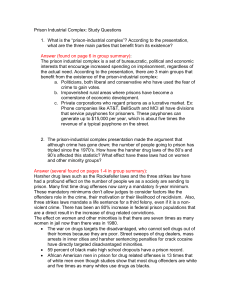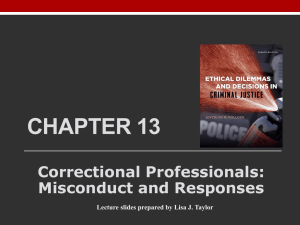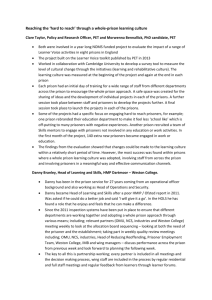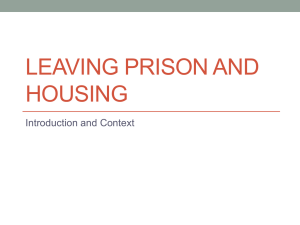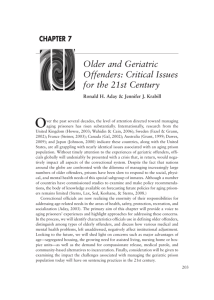Fixing-America
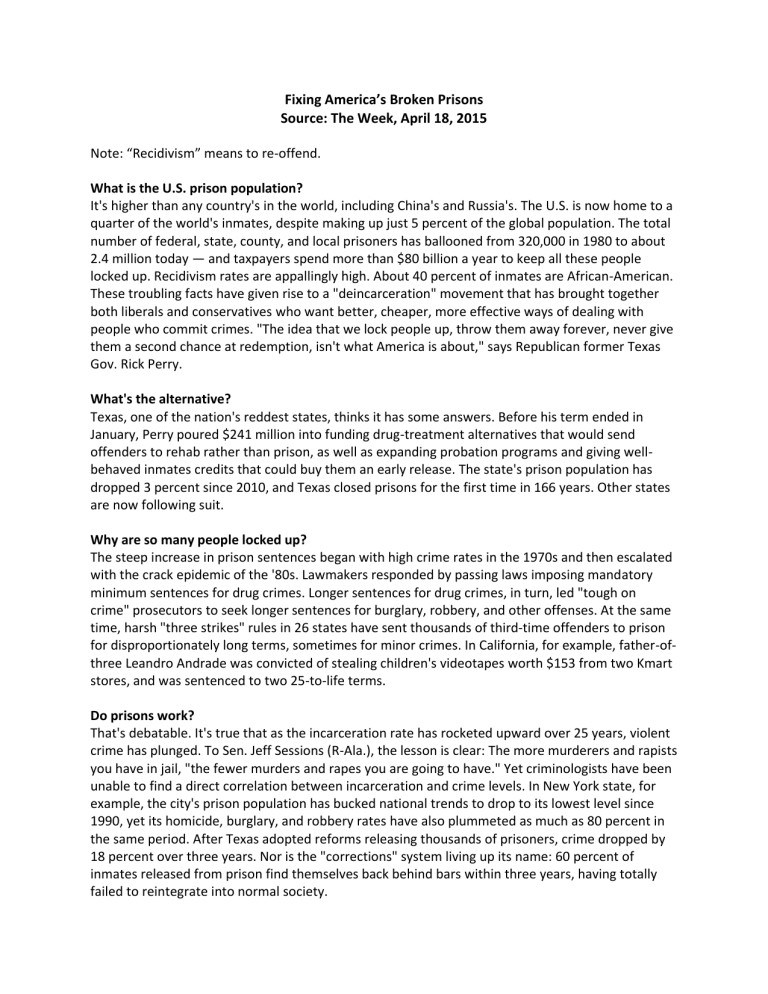
Fixing America’s Broken Prisons
Source: The Week, April 18, 2015
Note: “Recidivism” means to re-offend.
What is the U.S. prison population?
It's higher than any country's in the world, including China's and Russia's. The U.S. is now home to a quarter of the world's inmates, despite making up just 5 percent of the global population. The total number of federal, state, county, and local prisoners has ballooned from 320,000 in 1980 to about
2.4 million today — and taxpayers spend more than $80 billion a year to keep all these people locked up. Recidivism rates are appallingly high. About 40 percent of inmates are African-American.
These troubling facts have given rise to a "deincarceration" movement that has brought together both liberals and conservatives who want better, cheaper, more effective ways of dealing with people who commit crimes. "The idea that we lock people up, throw them away forever, never give them a second chance at redemption, isn't what America is about," says Republican former Texas
Gov. Rick Perry.
What's the alternative?
Texas, one of the nation's reddest states, thinks it has some answers. Before his term ended in
January, Perry poured $241 million into funding drug-treatment alternatives that would send offenders to rehab rather than prison, as well as expanding probation programs and giving wellbehaved inmates credits that could buy them an early release. The state's prison population has dropped 3 percent since 2010, and Texas closed prisons for the first time in 166 years. Other states are now following suit.
Why are so many people locked up?
The steep increase in prison sentences began with high crime rates in the 1970s and then escalated with the crack epidemic of the '80s. Lawmakers responded by passing laws imposing mandatory minimum sentences for drug crimes. Longer sentences for drug crimes, in turn, led "tough on crime" prosecutors to seek longer sentences for burglary, robbery, and other offenses. At the same time, harsh "three strikes" rules in 26 states have sent thousands of third-time offenders to prison for disproportionately long terms, sometimes for minor crimes. In California, for example, father-ofthree Leandro Andrade was convicted of stealing children's videotapes worth $153 from two Kmart stores, and was sentenced to two 25-to-life terms.
Do prisons work?
That's debatable. It's true that as the incarceration rate has rocketed upward over 25 years, violent crime has plunged. To Sen. Jeff Sessions (R-Ala.), the lesson is clear: The more murderers and rapists you have in jail, "the fewer murders and rapes you are going to have." Yet criminologists have been unable to find a direct correlation between incarceration and crime levels. In New York state, for example, the city's prison population has bucked national trends to drop to its lowest level since
1990, yet its homicide, burglary, and robbery rates have also plummeted as much as 80 percent in the same period. After Texas adopted reforms releasing thousands of prisoners, crime dropped by
18 percent over three years. Nor is the "corrections" system living up its name: 60 percent of inmates released from prison find themselves back behind bars within three years, having totally failed to reintegrate into normal society.
What are other states doing?
Several states, including Kansas, have followed Texas' lead by mandating drug treatment rather than prison time for some nonviolent offenders. Louisiana is releasing elderly inmates, while
Hawaii's HOPE program sends offenders who violate their terms of probation into short-term jails rather than slapping them with long prison terms. On the federal level, Congress is pursuing the bipartisan Smart Sentencing Act to reduce federal mandatory minimums, and the U.S. Sentencing
Commission has approved the early release of up to 46,000 nonviolent drug offenders. But some criminologists say these reforms don't go far enough.
Why not?
Only 17 percent of prisoners are behind bars because of drug crimes. "If you released every person in prison on a drug charge today," said criminologist John Pfaff, "we'd still be the world's largest incarcerating country." America will only get its prison population down to a more civilized level if it confronts a much bigger taboo: releasing the burglars, muggers, rapists, and violent offenders who make up half of all inmates. Rather than just letting them go free, reformers are pushing for
"graduated re-entry" through "prison without bars." One such proposal, devised by a UCLA team, would use the $2,600 monthly cost of housing an inmate to provide subsidized apartments to some offenders before their official release date. Tagged with GPS bracelets, the inmates would be encouraged to find employment, but sent back to prison if they violated the strict terms of their semi-release. The aim, says UCLA criminologist Mark Kleiman, is to encourage prisoners' reintegration into society — rather than forcing them to go from "utter dependency to total selfsufficiency in one flying leap." The proposal has yet to be tested, and Kleiman says it can be dropped if it doesn't work. "But sticking with the existing system, and accepting its disastrous results, is not a reasonable choice," he says.
Norway's prison utopia
The U.S. may be pursuing some radical prison reforms, but former New York state prison superintendent James Conway could hardly believe his eyes when he visited Halden Prison, one of
Norway's newest jails. The focus of Norway's prison system is on rehabilitation, not punishment. In
Unit C, a building for 84 inmates, convicts share apartments and eat, cook, and work together, using knives in the kitchen and power tools in the workshops. Convicts have locks on the inside of their doors — for privacy. Even Norway's notorious prisoner Anders Breivik, who in 2011 killed 77 people in a bombing and gun rampage, lives in relative luxury under his regime of "particularly high security" at Ila prison near Oslo, where he's allowed three cells: a study, gym, and bedroom.
Norway boasts that its five-year recidivism rates are just 20 percent. But Conway wasn't convinced.
"I must say I've never seen anything like this," he said. “This may be a bit over-the-top.”



